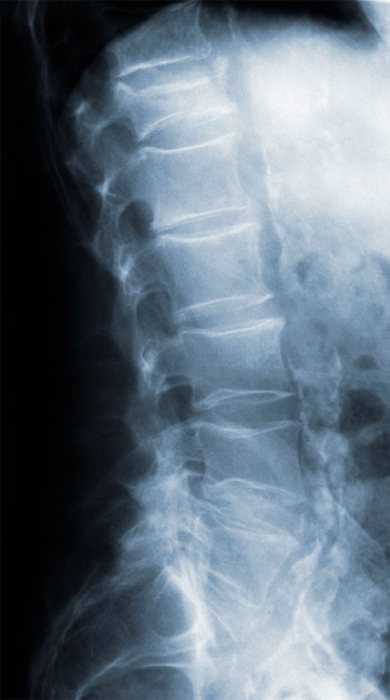
Suppose a drug is effective treating a long-term medical condition. How long is it prudent to continue taking it? When does the treatment cease to be helpful and begin to become risky? These are the puzzles facing physicians and their patients who are taking Fosamax and related biphosphonate drugs such as Actonel, Boniva, Reclast, and Atelvia for the treatment and prevention of osteoporosis.
Osteoporosis is a condition in which bone becomes less dense and at greater risk of fracturing. In developed countries, osteoporosis causes fractures in 30–50 percent of women and 15–30 percent of men older than fifty—fractures that may result from even minor traumatic events, like coughing or rolling over in bed. Since the late 1990s, highly effective drugs have been available for its treatment and prevention; Fosamax (alendronate), introduced by Merck in 1995, was the first drug of its kind.
Our bone mass normally builds up during our first thirty years, remains stable for the next twenty years, and then declines over the remainder of our lives. Osteoclasts are cells responsible for the resorption (breakdown) of old bone. In osteoporosis, Fosamax-like drugs decrease the number and activity of these osteoclasts, increasing bone-mass density (BMD) and reducing the risk of fractures by one-half. These drugs have been approved for the treatment and prevention of osteoporosis in post-menopausal women, but they have also been prescribed on a very long-term basis for healthy women, with no signs of osteoporosis or risks of fractures, with the hope of protecting their bones from fracturing later in life.
The routine use of Fosamax and other biphosphonates is now being questioned. These drugs do not appear to reduce the risk of fractures or to confer any real benefits in women who do not have osteoporosis. Far more troublesome are reports that they can cause a rare condition called osteonecrosis of the jaw (ONJ or jawbone death), as well as unusual thigh bone fractures and cancer of the esophagus. At this time, personal injury lawyers see a much clearer link between the use of these drugs and these rare conditions than does the general medical community.
SEE ALSO Evista (1997).

This x-ray depicts the spinal column of a male senior with osteoporosis. The most dangerous consequence of this condition is fracture—most commonly of the long bones and vertebrae. Multiple vertebral fractures (compression fractures) can lead to stooped posture, loss of height, chronic pain, and reduced mobility.